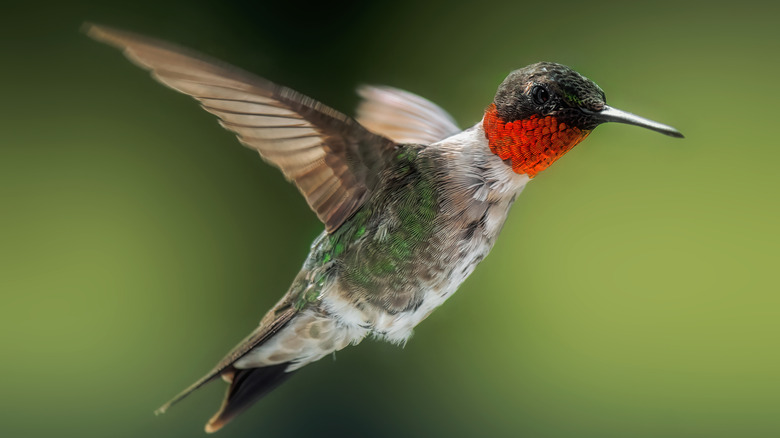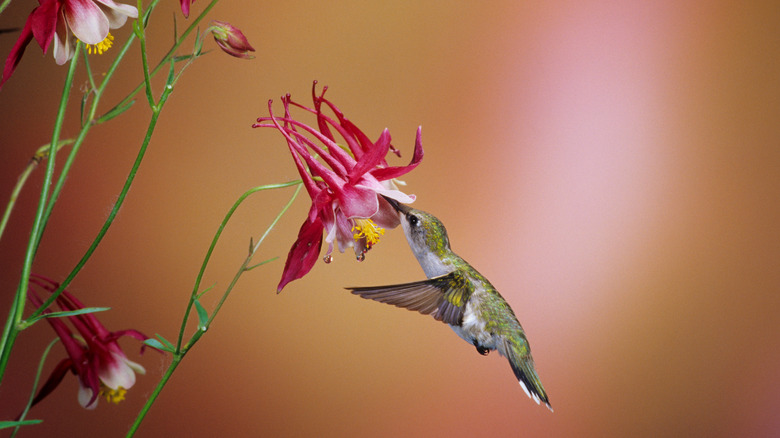2 Flowers You Can Plant In October To Attract More Hummingbirds In Spring
If you frequently enjoy watching ruby-throated hummingbirds in your backyard, you've probably noticed that these colorful little visitors become scarce by October. The shortening days of early fall signal the beginning of migration season for ruby-throated hummingbirds in much of the U.S., after they've spent the spring and summer consuming as much nectar as possible. Males leave before females, often as early as late August. It's a remarkable journey for such small bodies, many flying all the way across the Gulf of Mexico to overwinter in Mexico and Central America.
In spring, they do it all again in reverse — and chances are, they'll arrive in your backyard hungry. Once they find a nice patch of nectar-laden flowers, they'll often return again and again, year after year. So by preparing some nectar-rich, spring=blooming flowers in fall — like columbine (Aguilegia spp.) and bee balm (Monarda spp.) — you might make your garden a popular spring destination for returning hummers.
There are many beautiful columbine flowers that will easily attract hummingbirds to your garden in spring, many of which are native to the U.S.; in particular, hummingbirds will often visit eastern red columbine (A. canadensis). Meanwhile, there are 25 recognized bee balm species native to North America, and among these plants in the mint family, scarlet bee balm (M. didyma) and lemon bee balm (M. citriodora) are typically a hit with hummingbirds. When choosing which varieties of either family to plant, keep in mind that hummingbirds tend to favor tubular flowers, and red, pink, and orange blooms often catch their eyes (though not exclusively!).
How to plant and care for columbine and bee balm
You can sow columbines directly in fall by simply pressing the seeds shallowly into the soil — no need to cover them. They'll tolerate being planted in full sun as long as you keep the soil moist, but a little shade might be preferable. In general, they're hardy in USDA Zones 3 through 8. Although they're fairly short-lived perennials, with a lifespan of two or three years, they will self-seed to produce new plants if you leave the spent blooms. They don't like wet feet, so make sure not to overwater them. Once the flowers and foliage have all died back before winter, you can cut them down to the ground to neaten up the appearance of your garden.
Like many flowers native to America, bee balm is easy to directly sow from seed in spring or fall. When planting bee balm, keep in mind that good air circulation is crucial for these plants, or you might risk powdery mildew. Most bee balms are hardy in zones 4 through 9 and favor full sun for best performance. In optimal conditions, they may spread enthusiastically, so if you want to reduce the possibility of reseeding, remove spent flowers promptly.

